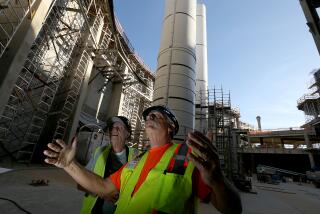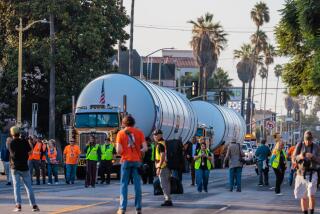PASADENA : JPL Structures Dedicated as Historic Landmarks
- Share via
Three structures that have helped NASA vault unmanned craft into space, two of them in Pasadena, became national historic landmarks Monday.
The dedication was held at one of the landmarks: the Space Flight Operations Facility, which serves as mission control center for NASA’s Jet Propulsion Laboratory in Pasadena. It was built in 1963.
“The scale of achievements of NASA’s planetary exploration program over the past 30 years is astounding,” David E. Gackenbach, superintendent of the National Park Service, said at the ceremony. “Our efforts to land a man on the moon, investigate the near-Earth environment and explore the planets and the solar system were supported from a technological base that reflected a depth and variety of support facilities unprecedented in American history.”
The second new landmark, the space simulator, was built at JPL in 1962. It tested the spacecraft that made the first successful interplanetary flight to Venus on Aug. 27, 1962. It is the only NASA facility that can replicate the conditions of cold, solar radiation and an extreme vacuum to test spacecraft.
The third is the 85-foot Pioneer Station antenna at the Goldstone Tracking Station near Barstow, the first antenna in the worldwide Deep Space Network, which began operating in December, 1958. It was named for the Pioneer, the first U.S. spacecraft to escape Earth’s gravity. JPL developed and operates the Deep Space Network for NASA.
Although the accepted threshold for considering a property historic is that it be at least 50 years old, the three structures’ “exceptional significance in the history of space exploration qualifies them for landmark status,” Gackenbach said.
More to Read
Sign up for Essential California
The most important California stories and recommendations in your inbox every morning.
You may occasionally receive promotional content from the Los Angeles Times.













